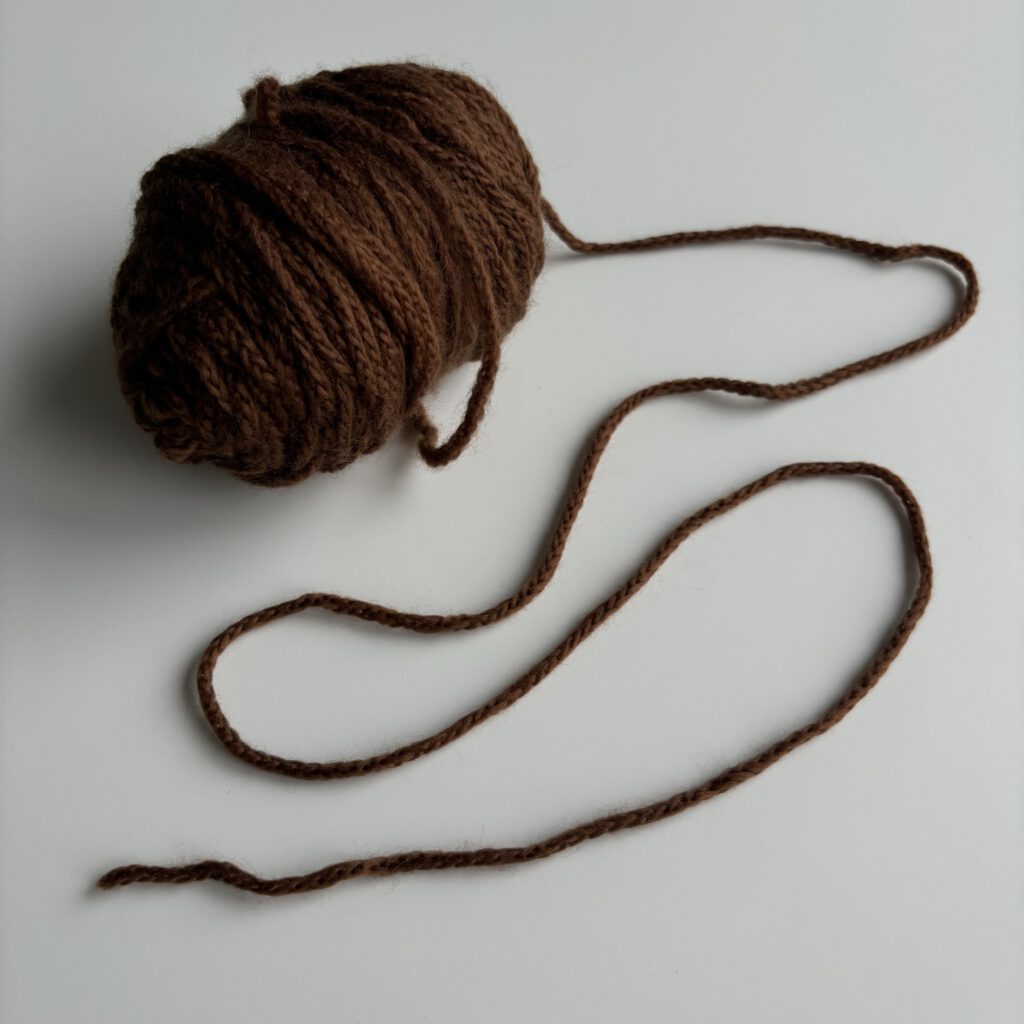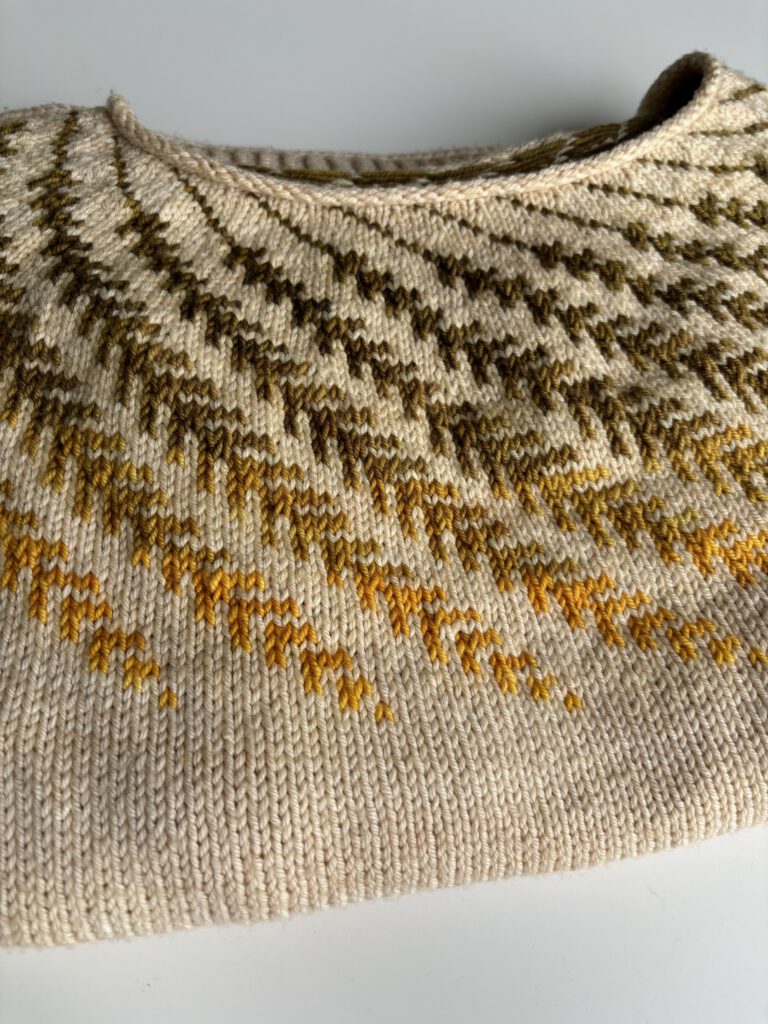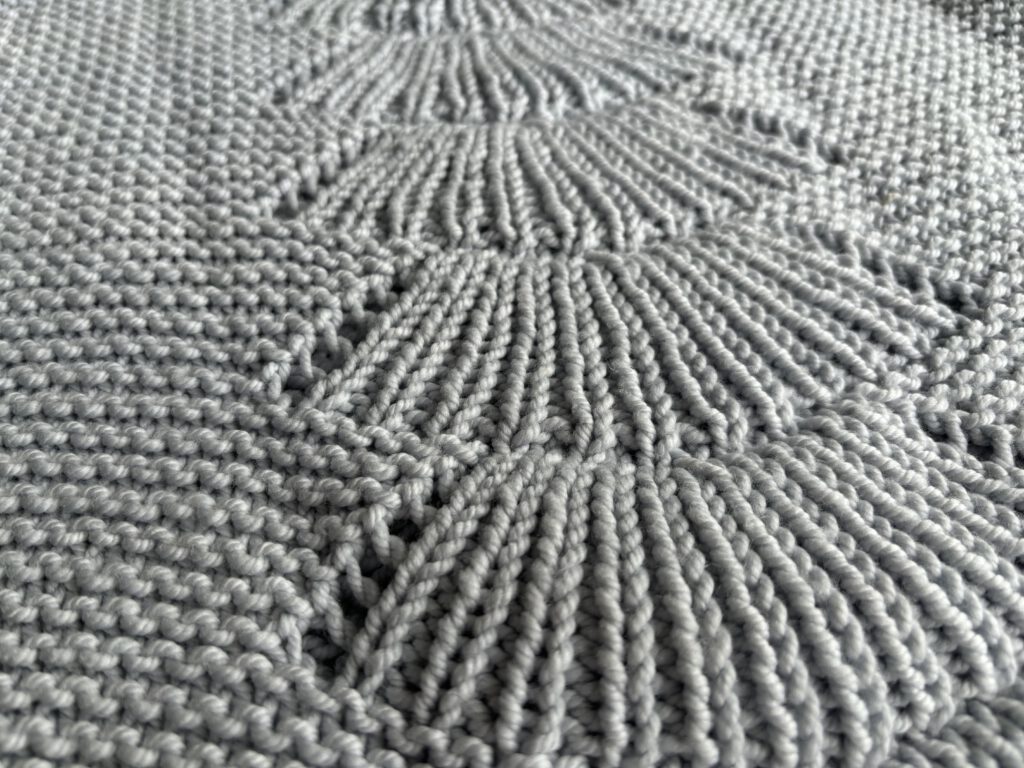If you knit or are interested in knitting or fibre crafts, then you’ve probably heard of “worsted weight yarn.” Its popularity makes it a yarn that many people reach for when making all types of projects, from cozy sweaters to blankets and stylish accessories. Because of its size and versatility, it is also a great yarn for beginners to use when learning how to knit. Its medium thickness allows for easy handling and makes it simpler to see your stitches. This can be helpful when you’re just starting out. However, you might be wondering just what is worsted weight yarn?
In this article, we cover everything that you need to know about this versatile yarn. We start by identifying what counts as worsted weight yarn, including its standard thickness and the types of fibers commonly used. You’ll learn how to read yarn labels to determine if a yarn is worsted weight and how to tell it apart from other types of yarn in a shop. Additionally, we provide tips for selecting the right worsted weight yarn for your specific projects, considering factors like fiber content, texture, and color. Finally, we share some practical advice for working with this yarn, including recommended needle sizes, tension techniques, and project ideas to get you started. By the end of this article, you’ll be well-equipped to choose and use worsted weight yarn effectively in your knitting.
What is Worsted Weight Yarn?

What does worsted mean?
The term “worsted” originates from the town of Worstead, in Norfolk, England, that was a manufacturing centre for yarn and cloth in the 12th century. This town became known for its production of high-quality woolen textiles, a reputation that has endured over the centuries. The term has since come to describe several aspects related to high quality wool, fabric and yarn weight. It not only refers to a specific type of yarn but also signifies a particular spinning technique that produces a smooth, strong, and fine yarn, ideal for detailed and durable fabrics. Additionally, the term has broadened to describe yarn weights, particularly those that strike a balance between thickness and manageability, making them great for a wide range of knitting projects. Thus, “worsted” represents a rich history and qualities that continue to be valued in the world of fiber crafts.
What number is worsted weight yarn?
Worsted weight is a medium weight yarn. If you are used to seeing yarn weight as a number, this one is considered to be a 4. This weight of yarn falls between DK weight yarn (3), on the lighter side, and chunky weight yarn (5), on the heavier side. You may also hear the terms heavy worsted and light worsted. These apply to yarn that is slightly heavier or lighter than what might typically be considered worsted. So from lighter weight to heavier weight, these would be arranged like this: DK, light worsted, worsted, heavy worsted, chunky.
Reading the Labels
To identify worsted weight yarn, it is important to get used to reading different types of labels. Labels provide information about the yarn’s characteristics, but not all of them use the standardized numbering system that indicates yarn weight. In those cases, understanding the typical yardage for worsted weight yarn is essential. Generally, worsted weight yarn varies from 200-265 yards per 100g ball of yarn (about 180-250 meters per 100g).
Interpretation of Yarn Weight
Knitters, crocheters and yarn brands will use various terms for the same or a similar thing. Sometimes worsted weight might be referred to by terms like medium, or aran. Even more confusing, sometimes two different people would label the same yarn with two different weights. For example, one person might consider a yarn of 260yds/100g to be DK weight and another person might think it is worsted weight. These different labels are handy to learn, but if you want to be precise about what weight of yarn you want to use, always look at the length per weight.
Fibre Quality
You might have already noticed, we have been talking about “worsted weight” solely as a weight of yarn. As it is used here, this term specifically describes the thickness of the yarn, rather than the type of fiber or the method of spinning. As such, you can find worsted weight yarn made from many different fibres, each bringing its own unique qualities to your knitting projects. For example, it can be made from wool, alpaca, silk, cotton, linen and more. Moreover, this yarn can be spun in different ways, each affecting the texture and behavior of the yarn. This variety within the worsted weight category means that there are countless options to explore, each with its own characteristics and best uses.
Using Worsted Weight Yarn

Why use Worsted Weight Yarn?
Now that you have an idea of what worsted weight yarn is, let’s talk about why it is so popular. First, worsted weight yarn is a great choice for beginners. This is because its thickness makes it easy to see stitches, making it less likely to make a mistake. Another benefit of this weight is that larger items can be completed in a shorter amount of time. The fact that it is slightly thick makes for bigger stitches allowing you to complete your projects somewhat quickly. However, it is not so thick that it looks bulky, so it can be used to make a wide variety of garments, accessories and home decor and the fabric will still look elegant. These factors make it an absolute go to yarn weight for sweaters for many knitters.
Design Elements
Another factor contributing to the popularity and versatility of worsted weight yarn is that it looks great when used to create a variety of design elements. It is commonly used for colorwork, particularly colorwork yoke sweaters. The stitches are refined enough that it can still create intricate designs with multiple colors of yarn. This yarn weight is also great for textured patterns like cables and seed stitch. It is even suitable for lacework. You don’t have to use lace weight yarn to create lace patterns. You can create beautiful lace designs using worsted weight yarn as well.
Needles to Use
When knitting with worsted weight yarn, the recommended needle size is US size 7 – 9 (4.5mm – 5.5mm). The typical gauge 4 to 5 stitches per inch of knitting. For preparing a gauge swatch, this comes out to 16-20 stitches per 4 inches (per 10cm). If crocheting, the recommended hook size is K – M (6.5mm – 9mm). The typical gauge would be about 3 stitches per inch, or 12 stitches per 4 inches (10cm).
Challenges when working with Worsted Weight Yarn

Splitting
Worsted weight yarn could be prone to splitting, especially depending on how it was spun and what the yarn is made of. Splitting occurs when the needle or hook catches only part of the yarn, causing the plies to separate. This can be particularly frustrating as it interrupts the smooth flow of knitting or crocheting. It can also result in uneven stitches or even the need to undo and redo sections of your work. Cotton and silk yarns are particularly likely to split. Cotton yarn lacks the natural elasticity and fuzziness of wool, making its fibers more likely to separate. Silk yarn, known for its smoothness and sheen, is also prone to splitting because of its slippery texture and the way its fibers are often loosely spun.
In order to prevent splitting, you can use needles with duller tips, such as bamboo needles. Bamboo needles are less likely to pierce the yarn, which helps in maintaining the integrity of the plies. Another strategy to reduce splitting is to ensure you’re using the right needle size for your yarn. Using needles that are too small could make splitting issues more likely. Lastly, pay close attention to your technique. Ensure that you are inserting the needle or hook correctly into each stitch to help mitigate splitting.
Tension
Keeping a consistent tension can be a challenge when working with worsted weight yarn, especially for beginners. While this yarn is known for its excellent stitch definition, it cannot create an even fabric on its own. Inconsistent tension can lead to uneven stitches, which can negatively impact the appearance and structure of your finished project. To achieve a polished and professional look, it’s essential to practice good tension techniques. Take the time to find a comfortable placement of the yarn and a pace that allows you to control the yarn evenly. Check your work regularly and adjust as needed to help ensure that your creation turns out beautifully.
Weight
If you are using worsted weight yarn to create larger projects such as blankets or sweaters, you may have to deal with how heavy your project becomes as it nears completion. Although it is a “medium” weight yarn it can still become quite weighty when used in large quantities. It can help to rest the bulk of your project on something, like a pillow, to help support you as you work to finish your project.
Wrapping Up
We hope that this guide has helped you become more comfortable with identifying worsted weight yarn, and seeing why it is such a popular choice in the crafting world. Its medium thickness makes it easy to handle, providing excellent stitch definition and a balanced weight that suits both beginners and experienced crafters. While working with this yarn presents some challenges, such as keeping a consistent tension and dealing with the potential for splitting, these can be mitigated with practice and the right tools. By understanding the characteristics of worsted weight yarn and how to work with it effectively, you can create beautiful, polished projects that showcase this yarn’s strengths. Whether you’re making cozy sweaters, intricate blankets, or stylish accessories, we hope that you find that it offers you a rewarding crafting experience.




